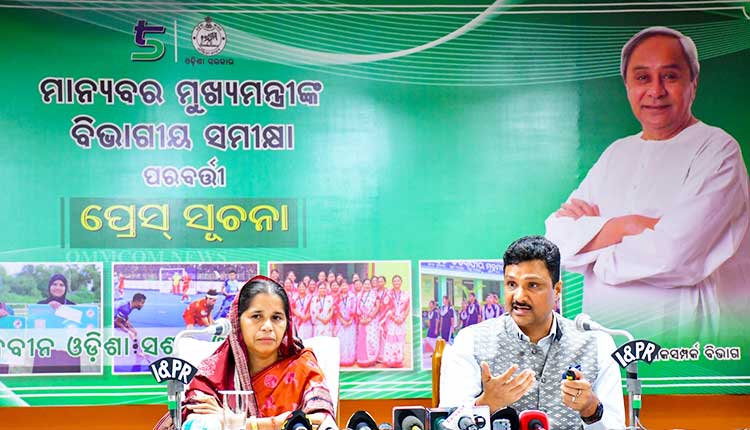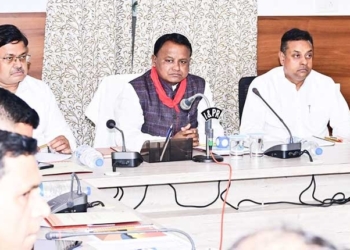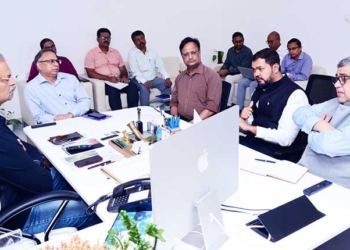Bhubaneswar: Chief Minister Naveen Patnaik reviewed the performance and activities guidelines of Handicrafts, Textiles and Handicrafts Department. Departmental Minister Rita Sahu apprised the CM about various initiatives taken by the department and its achievements.
Sahu said that after agriculture, the state government is giving utmost importance to the development of handloom and handicrafts. Due to the promotion of the department, the annual income of the weavers became Rs 58,085. Total 1447 beneficiaries have been included in the social security scheme.
Handloom production increased to Rs 410.37 crore. 146.40 crores have been paid to the weavers by the Department in 2023 as revised payment. The annual turnover of Boyanika is Rs 162.14 crores, while Sambalpuri Bastralaya made Rs 71.24 crores, Utkalika Rs 17.79 crores and Amlan Rs 4.46 crores.
The annual turnover of handicrafts has increased to Rs 145.34 crores. 9 handlooms and 3 handicrafts products have got GI tag. Another 5 handicrafts have been applied for GI tag by the department. 18,611 silk farmers have been included as members of cooperatives.
Tussar silk production has increased to 129.09 metric tonnes. Outlining the various measures of the Department, Principal Secretary Dr Arabinda Kumar Padhee said these initiatives have empowered women engaged in handloom, weaving and handicrafts sectors.
773 women weavers have been financially empowered with exclusive use of 2,055 forms of weaving. 7737 women from 658 self-help groups have engaged in weaving.
Similarly, in the field of handicrafts, 89,556 women artisans are working in the state. 939 women self help groups have been financially empowered by developing handicrafts.
Since 2021, Chief Minister Bayan Jyoti Yojana is being implemented. Electric fans, bulbs and inverters are provided to the consumers. 9041 weavers have benefited from this scheme. There are 1149 women beneficiaries in this scheme. Under the Weaver Support Scheme for Livelihood and Income Enhancement, interest-free working capital is provided to the weavers in the form of loans up to Rs.50,000. In the year 2022-23, loans have been given to 238 weavers.
Elderly Weaver Support Scheme has been implemented for the senior weavers of the state from 2017-18. 1447 weavers are included in it. 384 of them are women weavers. Monthly pension has been given to the weavers above the age of 60.
Skill development training is being provided to improve the skills of the crafts. The objective of this training is to create permanent and regular self-employment for the youth and to attract more and more people to this industry.
57,727 artisans have been given skill training since 2000 till now. 20% margin assistance up to Rs. 20,000 has been provided for taking bank loans for setting up handicraft units under Craftsmen Development Scheme.
Since 2000 till now 13,618 artisans have benefited from this scheme. Handicraft artisans have been provided financial assistance of Rs 1 lakh 20 thousand in non-IOP districts and Rs 1 lakh 30 thousand in IOP districts for building their own workshops and houses.
So far financial assistance has been provided to 1045 artisans. Market assistance is being provided to handicrafts societies, self help groups, handicraft artisans to participate in various exhibitions within and outside the state.
Apart from this, market support is being provided for the distribution of handicraft products through various branches in Uttar Pradesh. 3213 artisans have been supported by this market.
Odisha Apparel and Textile Industry Policy 2022 has been enacted. Investors can get a discount of 40% of the original capital. A discount of Rs 6,000 for each female employee and Rs 5,000 for each male employee is being met.
Three large companies are operating in the state in the garment industry. 8164 people are employed in it. In 2018, the Chief Minister inaugurated the Kalabhumi Museum to preserve and promote the state’s glorious handloom and handicraft traditions. It now has 9 galleries, terracotta, traditional paintings, stone and wood carvings, metalwork, natural materials, and handicrafts.
In the last two decades due to the continuous efforts handloom, textile and handicraft sector in Odisha have witnessed a rapid growth. Odisha’s Tussar Silk Park Model has received national recognition.
During a presser followed by the review, Dr Padhee presented a clear picture of the various initiatives taken by the department and the social and economic upliftment of the artisans working in the handloom, textile and handicraft sector.















